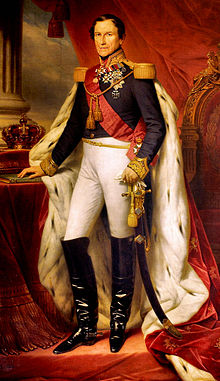Regency Personalities Series-Prince Leopold of Saxe-Coburg-Saalfeld
Regency Personalities Series
In my attempts to provide us with the details of the Regency, today I continue with one of the��many period notables.
Prince Leopold of Saxe-Coburg-Saalfeld
16 December 1790 ��� 10 December 1865

Leopold of Saxe-Coburg-Saalfeld
Prince Leopold of Saxe-Coburg-Saalfeld was the youngest son of Francis, Duke of Saxe-Coburg-Saalfeld, and Countess Augusta Reuss-Ebersdorf, and later became a prince of Saxe-Coburg and Gotha after Saxe-Coburg acquired Gotha from Saxe-Gotha-Altenburg in 1826 and yielded Saalfeld to Saxe-Meiningen.
In 1795, as a mere child, Leopold was appointed colonel of the Izmaylovsky Guards Regiment in Russia. Seven years later, he became a major general. When Napoleonic troops occupied the Duchy of Saxe-Coburg in 1806 Leopold went to Paris. Emperor Napoleon I offered him the position of adjutant, but he refused. Instead, he took up a military career in the Imperial Russian Cavalry. He campaigned against Napoleon and distinguished himself at the Battle of Kulm at the head of his cuirassier division. In 1815, at the age of 25, Leopold reached the rank of lieutenant general in the Imperial Russian Army.
In Carlton House on 2 May 1816, he married Princess Charlotte of Wales, the only legitimate child of the British Prince Regent (later King George IV) and therefore second in line to the British throne, and was created a British field-marshal and Knight of the Garter. On 5 November 1817, Princess Charlotte delivered a stillborn son; she herself died the following day. Had she lived, she would have become Queen of the United Kingdom on the death of her father, and Leopold presumably would have assumed the role later taken by his nephew, Prince Albert of Saxe-Coburg and Gotha, as Prince Consort of the United Kingdom, and never been chosen to reign as King of the Belgians. Despite Charlotte’s death, the Prince Regent granted Prince Leopold the British style of Royal Highness by Order in Council on 6 April 1818.
From 1828 to 1829, Leopold was involved romantically during several months with the actress Caroline Bauer, who enjoyed a striking resemblance to Charlotte. Caroline was a cousin of his advisor Christian Friedrich Freiherr von Stockmar. She came to England with her mother and took up residence at Longwood House, a few miles from Claremont House. But, by mid-1829, the liaison was over, and the actress and her mother returned to Berlin. Many years later, in memoirs published after her death, she declared that she and Leopold had engaged into a morganatic marriage and that he had bestowed upon her the title of Countess Montgomery. He would have broken this marriage when the possibility arose that he could become King of Greece. The son of Freiherr von Stockmar denied that these events ever happened, and indeed no records have been found of a civil or religious marriage or of an ennobling of the actress.
Following the Greek War of Independence, Leopold became the favoured candidate of the allied powers to become king of the new Greek state. However, on 21 May 1830, he finally rejected the offer of the Greek throne. He cited as reasons the perceived opposition to his candidacy from some quarters in Greece (he did not wish to be seen as a king imposed on the country by foreign powers), and the powers’ insistence that certain areas in Greek possession (in Acarnania and Aetolia) were to be given up to Turkey. The Greek throne was eventually accepted by Prince Otto of Bavaria following the London Conference of 1832.
After Belgium asserted its independence from the Netherlands on 4 October 1830, the Belgian National Congress considered several candidates and eventually asked Leopold to become King of the newly formed country. He was elected on 4 June, accepted, and became “King of the Belgians” on 26 June 1831.




